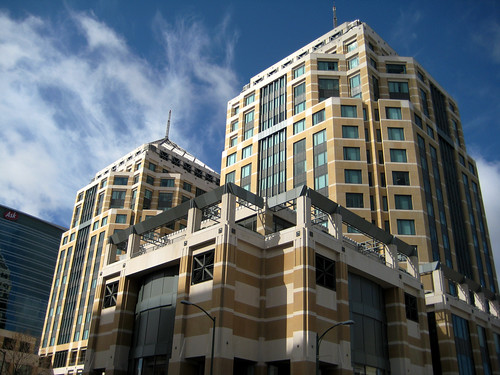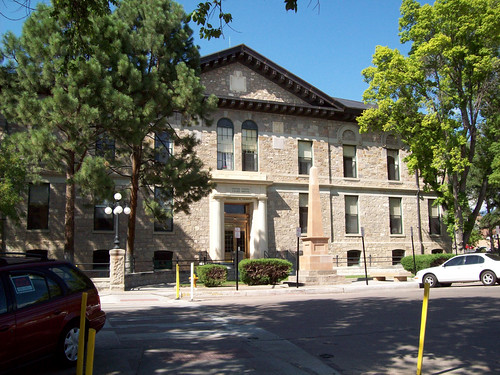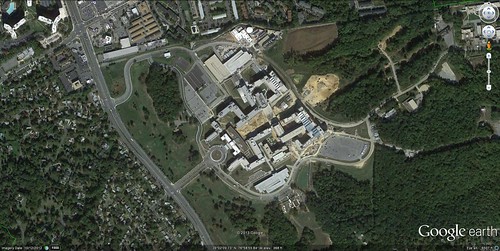Meet the nation's biggest landlord (and developer) (with Lee Epstein)

Posted February 6, 2013 at 1:27PM
Today’s post is co-authored with my frequent collaborator and contributor to this site, Lee Epstein. Lee is an attorney and land use planner working for sustainability in the mid-Atlantic region. Lee’s last appearance here was on January 10, when he asked, “Could Buenos Aires be a model for thinking about US cities?”
Who is the nation’s biggest landlord and developer? We won’t hold you in suspense: it’s the federal government. Indeed, the US General Services Administration provides workspace for substantially more than a million federal workers, half of whom work in federally-owned buildings and sites, and half of whom work in leased space, together comprising some 8,000 properties including around 200 million square feet under lease.
GSA is the federal government’s real estate arm. Form its website:
“GSA provides workplaces by constructing, managing, and preserving government buildings and by leasing and managing commercial real estate. GSA's acquisition solutions offer private sector professional services, equipment, supplies, telecommunications, and information technology to government organizations and the military. GSA policies promote management best practices and efficient government operations.“
It does not have responsibility for military facilities, but it does manage a fleet of over 200,000 motor vehicles.
When we recently queried a GSA database for just one state (Virginia), we found individual owned/leased property as small as 161 square feet (evidently some mini-office space in Charlottesville), and as big as 333,000 square feet (an office building in Richmond). Among familiar federal properties around the country, for example, are post offices, court houses, Federal Reserve Banks, and regional administrative offices and local service delivery offices of federal agencies.
The federal government is definitely a big (real estate) gorilla. In some places where the federal presence is especially significant – in and around Washington, DC, or where there are large defense complexes, or big research facilities, for example – it’s King Kong. As a result, where the feds build or lease space can, in some places, be a very big deal: such facilities not only can have large economic implications in a region, but their location and design can have substantial growth and livability implications for their home towns, cities and counties as well.
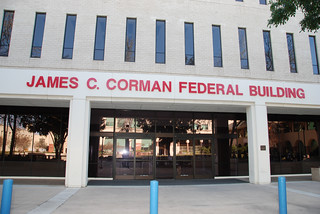 The federal officials who make the rules have not been blind to these concerns. Over the years, recognizing the environmental implications of such decision-making, several Executive Orders and administrative directions have been issued by different federal administrations establishing preferences for what we might refer to today as smart-growth locations for new federal facilities. As we describe below, these emphasize in-town locations and older buildings, for example. Additionally, the GSA has been greening itself over the past decade, expressing in its policies preferences for both green buildings and locations.
The federal officials who make the rules have not been blind to these concerns. Over the years, recognizing the environmental implications of such decision-making, several Executive Orders and administrative directions have been issued by different federal administrations establishing preferences for what we might refer to today as smart-growth locations for new federal facilities. As we describe below, these emphasize in-town locations and older buildings, for example. Additionally, the GSA has been greening itself over the past decade, expressing in its policies preferences for both green buildings and locations.
In particular, federal Executive Order 13514, signed by president Obama in 2009, establishes mechanisms to accomplish the following:
- “Ensuring that planning for new Federal facilities or new leases includes consideration of sites that are pedestrian friendly, near existing employment centers, and accessible to public transit, and emphasizes existing central cities and, in rural communities, existing or planned town centers”
- “The recommendations shall be consistent with principles of sustainable development including prioritizing central business district and rural town center locations, prioritizing sites well served by transit, including site design elements that ensure safe and convenient pedestrian access, consideration of transit access and proximity to housing affordable to a wide range of Federal employees, adaptive reuse or renovation of buildings, avoidance of development of sensitive land resources, and evaluation of parking management strategies.”
We started highlighting some key phrases in there for our readers but, really, the entire passage points to smart-growth decision-making. And there’s more:  In 2010, the federal Department of Transportation, in partnership with several other agencies, issued an outstanding set of specific recommendations “to encourage sustainable locations for future government facilities.”
In 2010, the federal Department of Transportation, in partnership with several other agencies, issued an outstanding set of specific recommendations “to encourage sustainable locations for future government facilities.”
(There are additional executive orders, too, something that is supposedly the law of the land. In particular, then-president Clinton signed Executive Order 13006, “encouraging the location of Federal facilities in our central cities.” Then-president Carter issued Executive Order 12072, requiring federal location decisions to “conserve existing urban resources and encourage the development and redevelopment of cities” and “give first consideration to a centralized community business area and adjacent areas of similar character.” These directives, as with President Obama’s, are still in effect. Even then-president Nixon issued an order to “protect and enhance the cultural environment” through historic preservation.)
These varying levels of guidance are certainly a good thing, and undoubtedly have at least some influence over building and location decisions. There are many fine federal buildings in great, walkable settings, including some we show in the photos with this article. But, unfortunately, experience has shown that the rules don’t always work; sometimes they just “sort of” do; and sometimes they are honored only in the breach.
For example, ten years ago when the US Food and Drug Administration decided it would be more economical to consolidate its disparate, leased offices in the Washington, DC suburbs into (mostly) one very large facility, it initially looked to greenfield sites where it could build an isolated campus. Environmental groups weighed in heavily against such a move.
To the rescue, sort of, was an influential Senator who eyed a soon-to-be abandoned defense research facility on (uncharacteristically) a few hundred acres in the Maryland suburbs. Voila, that’s where the 8,800-person campus of the FDA landed. It’s about a mile and a quarter outside the Capital Beltway, ten miles from downtown DC. That’s either in the inner suburbs or just beyond, depending on your perspective.
So yes, the location is somewhat better than a remote greenfield – it’s within the pre-existing regional development footprint – but, still, the huge facility is not on a major transit line, and in its ultimate design, it’s still a very isolated project, not at all integrated with the nearby community (see satellite view). It has done little to enhance its “neighborhood.” One can find many examples like this, and some that unfortunately are worse.
Many who have visited Washington, DC may recall the ugly, prison-like Federal Bureau of Investigation building that takes up a square block on Pennsylvania Avenue, in between the White House and the Capitol. 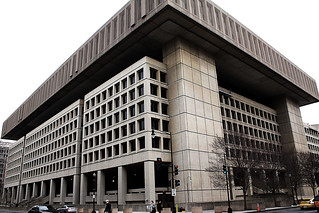 As it has finally outlived its usefulness, the feds are now out and about, scouting for new monster digs. ‘Where oh where shall that be,’ they call out, coquettishly. And immediately, all the local jurisdictions in the vicinity come a-courtin’, touting their various benefits.
As it has finally outlived its usefulness, the feds are now out and about, scouting for new monster digs. ‘Where oh where shall that be,’ they call out, coquettishly. And immediately, all the local jurisdictions in the vicinity come a-courtin’, touting their various benefits.
These days, “security” trumps all, and for the FBI… well, you get the point. Short of building a crocodile-filled moat and 12-foot exterior wall topped by razor wire, spotlights, and gun turrets, it is likely that one of the FBI’s major location criteria will be enough land so that it can feel secure from snooping spies and terrorist threats. So that would be, what, in the Badlands of South Dakota? Maybe The Citadel in northern Idaho would have them, presenting some tantalizing cultural conversations.
Surely a case can be made that even in DC there may be redevelopment locations that can satisfy security concerns, provide the transit access desired by the agency’s thousands of employees (many of whom currently arrive by bus and subway), and induce the economic development uplift that can come with a new neighbor of substantial proportions. And if not right in DC proper, surely there are locations at or near lightly developed Metro station areas in inner suburban locations where a facility of this size and nature, sustainably designed, can add economic development value and enhance the surrounding community. Surely. But we’re not holding our breath. 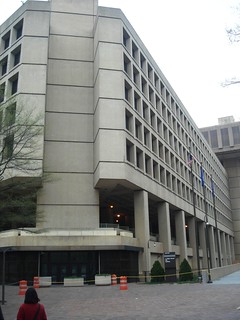 Politicians with sticky fingers and important committee assignments will once again become involved, certain criteria will be blown out of proportion, and who knows where this important federal agency will land.
Politicians with sticky fingers and important committee assignments will once again become involved, certain criteria will be blown out of proportion, and who knows where this important federal agency will land.
The federal government is a big presence in this country, in some places more so than others. As noted above, it is a very important landlord and sometime-developer, with the power to help or hurt the places where it “lives.” Despite the on-going spectacle of the dysfunctional Congress, once in a while the feds can serve to model the good stuff and eschew the bad. Where real estate is concerned, that means developing or leasing in geographic locations that improve those places by the fact of the federal presence and by the designs that are chosen.
And it means not developing or leasing in places that mock sustainability by their inaccessibility and lack of connection to the community; by employing architecture, site designs, and land uses plopped down with little regard for the neighborhoods around them; or by helping to strip a place of its identity by replacing valuable farm or natural areas with dull and uninspiring buildings on isolated “campuses.”
Simply following the rules already in place would be a great start.
Related posts:
- The opportunity that Apple is missing to build a better neighborhood (July 10, 2012)
- A high-tech corporate giant strengthens a walkable, transit-accessible neighborhood (March 14, 2012)
- The legacy of 9/11 for community & the built environment (September 12, 2011)
- EPA Region 7: "We were just kidding about that sustainability stuff" (April 18, 2011)
- Where we place government buildings matters; the Administration agrees (July 15, 2010)
- City living in an age of hyper-security: it’s not what it used to be (July 24, 2009)
Move your cursor over the images for credit information.
